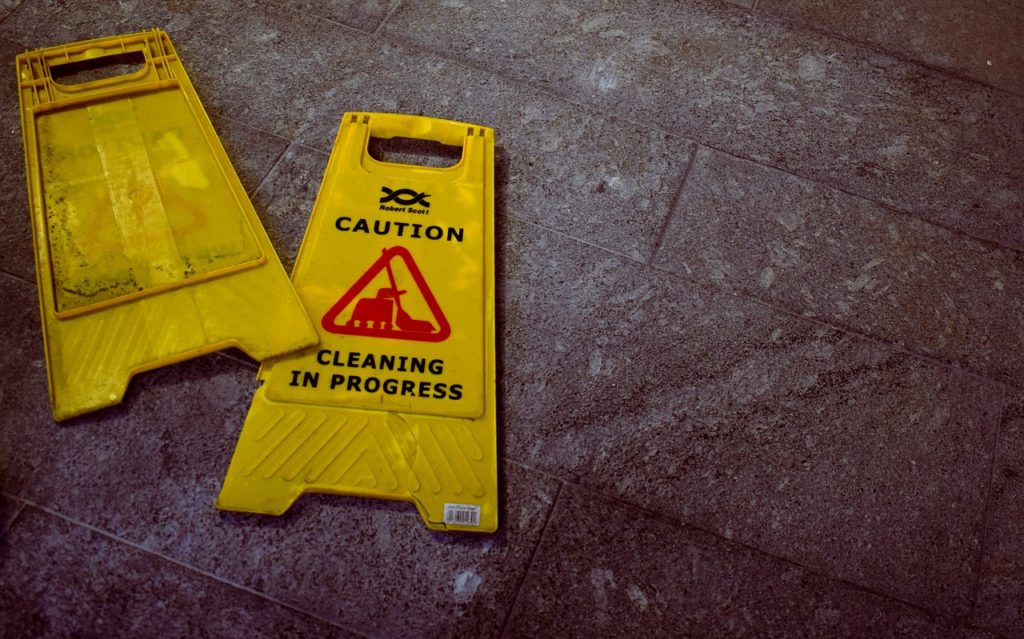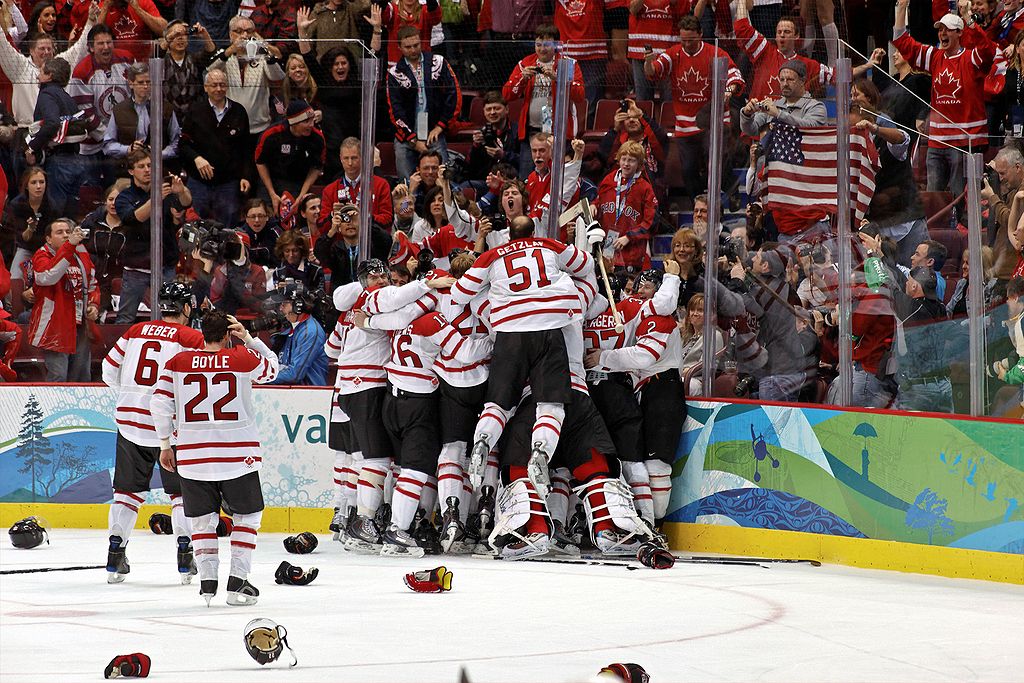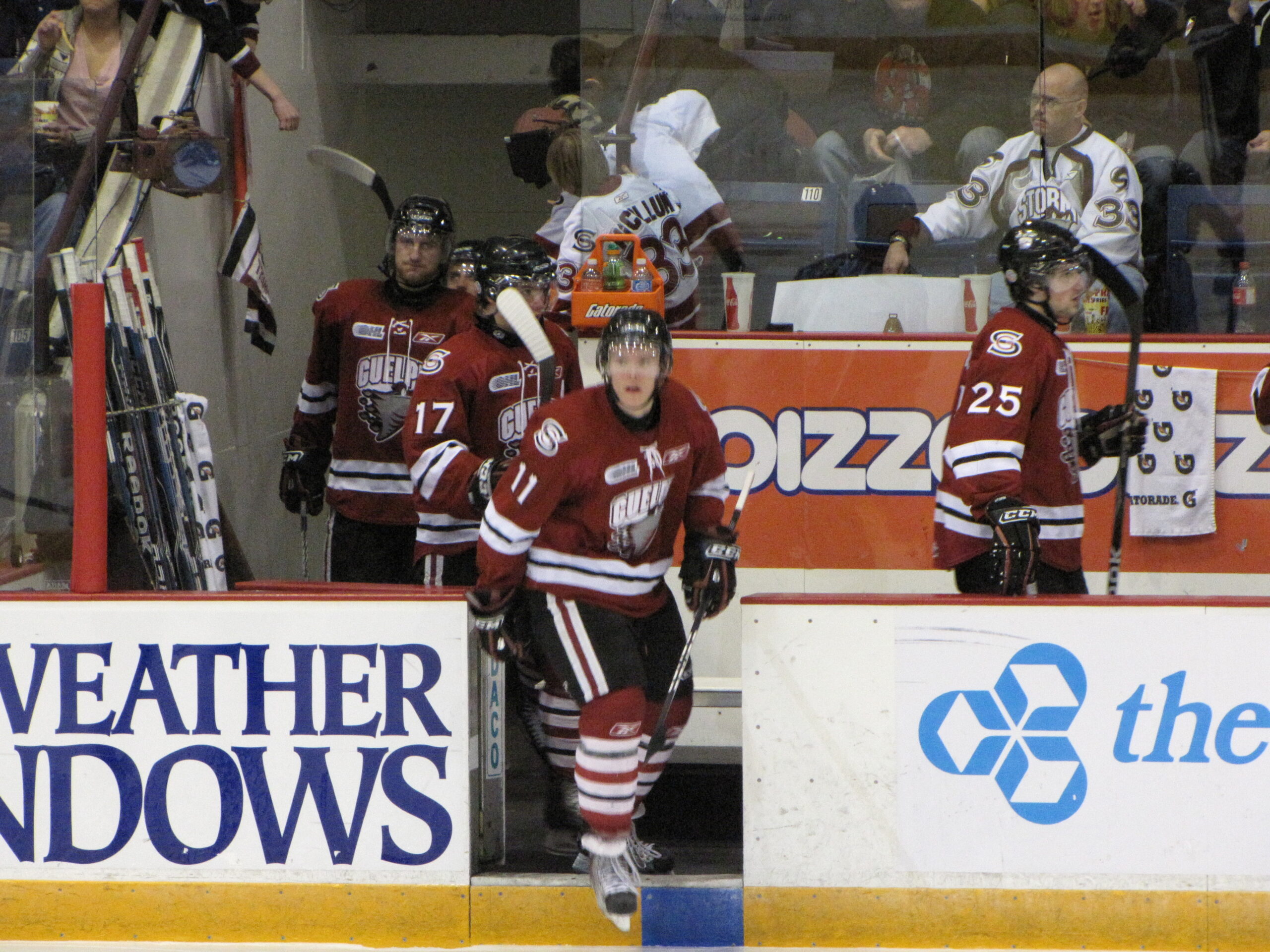By Alec Roberson
Routinely victims of hazing, bullying, physical and verbal harrassment, physical assault, sexual harassment, and sexual assault. What does that sound like? Probably not like junior hockey played by teenagers. But Daniel Carcillo and Garrett Taylor alleged this in a class action lawsuit (the “Lawsuit”) filed in Ontario against the Canadian Hockey League (the “CHL”). This article is Part II in our two part series on hockey abuse. If you have not read Part I entitled “Hazing in Hockey…Initiation into the Club or Hockey Abuse? Part I” we encourage you to check it out here. While that Article focused mostly on the allegations of Eric Guest, this Article focuses on breaking down the Lawsuit.
Background
On June 18, 2020, Carcillo and Taylor filed the Lawsuit against the CHL. They claimed damages for negligence, breach of fiduciary duty, and breach of contract related to abuse and hazing suffered by hockey players ages 15 to 17 while playing in the CHL. This came only three days after former CHL player Eric Guest alleged similar hazing instances via an Instagram video. (If you want to learn more about Eric Guest check out our Part I Article of this two part series on hockey abuse and hazing.)
In a nutshell the Lawsuit provides that Carcillo, Taylor and players in the class were victims of a long list of very disturbing sexual, verbal, emotional and physical abuse by older players and team representatives while playing in the CHL. Frankly, the instances of hazing and abuse alleged are highly disturbing. If you would like to specifically read them I encourage you to read that section of the Lawsuit here.
1. Daniel Carcillo‘s Experience
Carcillo alleged that he was subject to “almost constant and repetitive abuse” while playing for the Sarnia Sting of the Ontario Hockey League (“OHL”) during the 2002-2003 season. Such abuse left him “permanently traumatized” and led to mental health issues not present before the abuse. He further alleged that his coach and the Sting’s General Manager knew of the abuse but did nothing about it.

2. Garrett Taylor‘s Experience
Similar to Carcillo, Taylor alleged that he suffered abuse and hazing while playing hockey for the Lethbridge Hurricanes of the Western Hockey League (“WHL”) during the 2008-2009 season. His coaches and GM were also allegedly aware of the abuse but did nothing about it. Taylor still suffers from psychological and physical injuries from his time in the WHL.
The Lawsuit further provides instances of similar abuse that were allegedly aided or ignored by the CHL.
The Parties
The Lawsuit is a class action lawsuit. Similar to the United States, in Ontario this means that a “class” of eligible participants is established in the suit. Individuals that fit into that class are joined as plaintiffs/claimants against the defendant. If such individuals want to opt out, they can. Class representatives must represent the class. One of the first steps in a class action lawsuit is the “class” must be certified by the Court. This has not yet happened in the Lawsuit. While this gives an overview of a class action lawsuit, the specifics are complex and outside this article’s focus.
1. The Class
The Lawsuit defines the class as “all former and current players who play or played in any of the Leagues while under the age of 18.” The “Leagues” refers to the OHL, WHL, or the Quebec Major Junior Hockey League (“QMJHL) of the CHL. Keep in mind it is possible that this class may be restricted depending on the Court’s ruling during class certification.
2. Class Representative – Daniel Carcillo
Carcillo is a Canadian born hockey player who began playing for the OHL’s Sarnia Sting in 2002 at age 17. He continued to play four seasons in the OHL for the Sting and for the Mississauga IceDogs. He then played ten years in the NHL, most notably winning a Stanley Cup with the Chicago Blackhawks. While he was known as an “enforcer” through his NHL career, since retirement Carcillo has been an advocate for mental health and the overall well being of hockey players.
3. Class Representative – Garrett Taylor
Taylor is an American born hockey player who started playing for the WHL’s Lethbridge Hurricanes in 2008 at age 17. He played two seasons in the WHL for the Hurricanes and the Prince Albert Raiders. Unlike Carcillo, Taylor only played a few pro hockey games at the minor league level.
4. Defendants
The defendants in this Lawsuit include the CHL, its leagues (the OHL, WHL, and QMJHL), and all of those leagues’ member teams (more specifically the corporations, partnerships and limited liability companies that own and operate those teams). The CHL, its leagues and the teams are collectively herein referred to as the “Defendants.”
a. The CHL
As the Lawsuit provides, the CHL is the world’s largest development hockey league. It has 52 Canadian and 8 American teams across its three leagues. The CHL oversees, supervises and controls the administration of those leagues as their governing body. As one of the main suppliers of players to the NHL, the CHL has a contractual relationship with the NHL. The CHL is also an affiliate of Hockey Canada.
b. The OHL, WHL and QMJHL
The OHL is a corporation that operates a major junior hockey league in the province of Ontario (as well as Michigan and Pennsylvania in the United States) and is subject to the laws of Ontario. The WHL is a corporation that operates a major junior hockey league in the provinces of British Columbia, Alberta, Saskatchewan, and Manitoba (as well as Oregon and Washington states in the United States) and is subject to the laws of Canada. The QMJHL is a corporation that operates a major junior hockey league in the provinces of Quebec, Nova Scotia, Prince Edwards Island and New Brunswick and is subject to the laws of Quebec.
What are the Player’s Claiming Against the CHL?
The Class Representatives/Plaintiffs (Carcillo and Taylor) assert three main legal claims against the Defendants. These include negligence, breach of fiduciary duty, and breach of contract. In making these claims, the Plaintiffs have asserted that there were numerous instances of hockey related abuse and hazing, that the Defendants knew or should have known about the abuse, the Defendants did nothing about them, and that the policies in place to prevent and address such abuse were inadequate.
1. Negligence
The first legal claim the Plaintiffs assert against the Defendants is negligence for failing to provide a hockey environment to the Class Members free from abuse and hazing. To prove a claim of negligence the plaintiff has to successfully prove four elements of the claim.
a. Duty
The first is that Defendants have to have owed a duty of care to the Plaintiffs. Such a legal duty is created when there is a relationship between the parties that causes the defendant to owe some standard of care to the plaintiff. For example, a restaurant owner must maintain its premises in a safe condition to prevent harm to any customers. The Plaintiffs assert that the Defendants stood in loco parentis with the Class Members. In loco parentis is Latin for “in the place of a parent.”
The Defendants are responsible for the Class Members (who are minors) while they are playing in the CHL. Most players actually leave their parents to go play in the CHL. The CHL also provides the programs, training, facilities and policies to which the Class Members participate. It is reasonable to see a parent to child-like relationship here.
Another important factor is that the CHL has policies in place addressing the prevention of this type of abuse. This seemingly would create a duty to at least enforce those policies. Due to this unique relationship, the Defendants owe a duty to the Class Members to provide not only a safe playing environment on the ice (assuming the normal risks while playing ice hockey), but also a safe environment off the ice free from abuse or hazing.
b. Breach of Duty
After establishing the duty of care, a breach of that duty is the second element required to prove negligence. The main question asked is if the defendant did or failed to do something that an average reasonable person would have done in the situation. This question helps to draw the line between what is truly a breach of duty and what may be something so unforeseeable that no one would have reasonably acted differently.
i. The Defendants’ alleged breach
The Lawsuit provides that the Defendants breached their duty by failing to adequately enforce their policies, address instances of abuse, and provide a safe environment for the Class Members free from abuse. It continues to say that the Defendant’s policies themselves did not address the forms of abuse or hazing the Class Members suffered while playing hockey in the CHL.
ii. Which breach?
Analyzing a breach of duty related to policy enforcement may be different than analyzing the adequacy of the policies themselves. If the Defendants failed to adequately enforce their policies on abuse, there likely needs to be some form of knowledge of the abuse by the representatives of the Defendants (such as coaches). This could be actual knowledge (i.e. they actually did know) or constructive knowledge (i.e. they should have known). The Lawsuit specifically provides that the Defendants knew of the alleged abuse but failed to adequately address it.
In Guest’s situation, his coaches stated they didn’t know that he was pressured to use cocaine during a team party. Maybe they should have and therefore breached their duty. But even if it is unreasonable for them to have been aware of the abuse, what does that say about the policies in place? The Defendants may be in a lose lose situation on this aspect. A Court may decide that a lack of knowledge proves inadequate policies on hockey related abuse and hazing incidents. A lot will depend on the evidence shown at trial but it is a possible conclusion.
c. Causation
The third element of negligence is causation. This means that the Defendant’s action or inaction caused the Plaintiff’s harm and such causation was reasonably foreseeable. Causation fails if the harm caused was not a reasonably foreseeable consequence of the defendant’s actions or inaction. For example, lets say a driver fails to stop at a red light and causes a wreck. It was reasonably foreseeable that the driver’s failure to stop would cause the wreck.
i. Actual versus proximate cause
There are two types of causation that have to be proven. Actual cause is a factual question that asks “but-for” the defendant’s action or inaction would the harm have occurred? Actual cause alone will not suffice to prove the element of causation. The second type of causation is proximate or legal cause. Proximate cause is where the “reasonably foreseeable” question mentioned above comes into play.

A common fact pattern that explains actual versus proximate cause involves a restaurant that fails to clean a water spill. A customer then slips and injures themselves. The restaurant’s failure to clean the spill would be the proximate cause of the individual’s injury. However, lets say the ambulance wrecked taking the individual to the hospital. “But-for” the restaurant’s failure to clean the spill the individual would not have been in the wreck. Even so, the restaurant’s inaction would not be the proximate cause of the injuries caused by the wreck.
ii. Were the Defendants’ actions the proximate cause?
Here the Plaintiffs allege that the harm suffered by the Class Members was a reasonably foreseeable consequence of the action and inaction of the Defendants. If it is proven that the Defendants failed to act after knowing of the hockey related abuse and hazing, their inaction would likely be the proximate cause of the Class Members’ harm.
However, if the Plaintiffs cannot show that the Defendants actually knew of the abuse and hazing, they will have to show that the Defendant’s should have known. This could lead to a further analysis of whether the policies are inadequate to the point that their inadequacy is a proximate cause of the Class Members’ harm. Is it reasonably foreseeable that based on the policies and programs in place the alleged abuse would happen? This may be the hardest element for negligence for the Plaintiffs to prove.
d. Damages
The final element required to prove negligence is damages. If the plaintiff did not actually suffer any damages to which there could be a recovery, there is no negligence. Damages include monetary losses but also can include emotional and mental distress and long term complications or loss of abilities. Generally, a monetary award is the reward.
The Plaintiffs allege many different types of damages but most center around long term physical, emotional, and psychological harm. There will have to be evidence to corroborate specific examples of these types of damages.
The Plaintiffs also made another interesting allegation. Not only did the Defendant’s actions cause damages to the Class Members, but also to the Class Members’ family. While this may be more of a jump for causation, it is not completely unreasonable given the unique relationship between the CHL and its minor players.
While the evidence may dictate the outcome, the Plaintiffs have a strong case for proving negligence.
2. Breach of Fiduciary Duty
The second claim the Plaintiffs assert is breach of fiduciary duty. More specifically, the Plaintiffs allege that the Defendants breached their fiduciary duties to the Class Members by failing to “properly supervise and control the operations of its servants, employees, and agents.” Like negligence, the Plaintiffs must show various elements to prove a breach of fiduciary duty claim. However, the standard for breach of fiduciary duty is higher than negligence.
a. Fiduciary Relationship
The first element the Plaintiffs must prove for breach of fiduciary duty is a fiduciary relationship between the Class Members and Defendants. This is a stronger relationship than required for negligence.
There are certain relationships that are historically recognized as “fiduciary.” These relationships include attorney-client, physician-patient, trustee-beneficiary, and parent-child.
There are also relationships that, while not historically recognized as fiduciary, show the same characteristics as those relationships. Those characteristics are that the “fiduciary” acts in the interests of the beneficiary, that the fiduciary is in control of the beneficiary such that the beneficiary is in a vulnerable position, and that the fiduciary’s control over the beneficiary can directly affect the beneficiary’s legal or practical interests.
i. Parent-child relationship
As mentioned above, the Plaintiffs allege that the Defendants stood in a parent-child like relationship with the Class Members. Specifically, the Class Members were mostly minors and lived away from home to play in the CHL. The Class Members trusted and relied on the Defendants to take care of them.
It seems fair that a fiduciary relationship exists based on the parent-child like relationship. Whether these players are at the rink, on the road with the team, or with their billet families (which have to be approved by the teams), they are directly or indirectly in the custody, care and control of the Defendants. Most judges would likely have a hard time overlooking this type of relationship as being less than fiduciary since minors are involved.
ii. Control over the players
The Plaintiffs also made an interesting assertion that the Defendants had a large amount of control over the Class Members due to their influence in the Class Members’ pursuit of professional careers in hockey.

The control the Defendants have over the Class Members’ pursuit of professional hockey careers is seemingly immense. These players would do anything the teams asked if they believed there was a shot to get to the NHL. Whether this alone creates a fiduciary relationship is tricky. It is somewhat similar to a teacher-student relationship in college where the teacher has influence over the student’s ability to get a job. However, here there is likely stronger influence and involves minors. It will be interesting to see how the Court addresses this specifically.
Either way, a fiduciary relationship likely exists between the Defendants and the Class Members. As the Plaintiffs allege, due to that relationship “the Defendants owe a duty to the Plaintiffs to generally not operate a system of teams that caused harms to underage players.”
b. Breach of Duty
The second element for a breach of fiduciary duty claim is that the Defendants breached a duty owed to the Plaintiffs and Class Members. Much like negligence, the Plaintiffs have alleged that the Defendants have breached their fiduciary duties by both failing to have adequate policies to protect the Class Members from abuse or hazing while playing hockey and to enforce those policies or control the actions of its employees.
In addition, to support their claim for breach of fiduciary duty, the Plaintiffs allege that the Defendants “knew or ought to have known that as a consequence of the actions” the Class Members would be harmed. The Plaintiffs continue to allege that the Class Members relied on the Defendants to protect their interests and their safety while playing in the CHL.
A difference between negligence and breach of fiduciary duty is that the defendant breached a duty of loyalty and good faith to the plaintiff through some sort of self dealing or dishonesty for breach of fiduciary duty. Negligence simply requires a breach of the duty. It is possible that even though a fiduciary relationship exists, the fiduciary did not necessarily breach a fiduciary duty.
While the Plaintiffs allege that the Defendants acted in their own self interests to the detriment of the Class Members, this is a fact-heavy element and will come down to what the Plaintiffs can prove.
c. Causation and Damages
There also needs to be a showing of causation and damages to prove breach of fiduciary duty. Again, the defendant’s actions need to be the actual and proximate cause of damages suffered by the plaintiff. The causation element can be analyzed in a similar fashion as causation for negligence mentioned previously. Likewise, the Plaintiffs assert in the Lawsuit that due to the Defendant’s breach, the Class Members suffered similar damages as mentioned above in the negligence claim.
The claim for breach of fiduciary duty is going to be harder for the Plaintiffs to prove than negligence. It also may lead to a bigger reward. It seems likely that a fiduciary relationship does exist between the Defendants and the Class Members. However, proving that the actions or inactions of the Defendants amounted to an actual breach due to self dealing or dishonesty will be a battle. Further evidence presented will determine this.
3. Breach of Contract
The other main claim the Plaintiffs assert is for breach of contract. Each league in the CHL has their own Standard Player’s Agreement (“SPA”) that each team, player and that player’s parent or legal guardian sign when the player plays in the CHL. The leagues set out these SPAs as standard uniform contracts.
Per the Lawsuit, each SPA sets out express contractual duties the leagues and teams owe the players. This includes providing “training, education, supervision and character development.” The SPA also informs the players of the common law duty of care the Defendants owe the Class Members. The Plaintiffs claim that the Defendants breached both the express and implied terms of the SPA.

Like negligence and breach of fiduciary duty, the Plaintiff must prove certain elements to be successful on a claim for breach of contract. However, most of the analysis here will focus on the “failure of the defendant to perform its obligations under the contract.” The other elements include the existence of a valid contract, performance of the contract by the plaintiff, and damages to the plaintiff due to the defendant’s breach.
The nature of the SPA makes it pretty easy to show that it is a valid contract. Likewise, the Class Member’s obligations under the contract are not really in question. The damages suffered are the same as those mentioned above.
a. Express Breach of Contract
So the central question of this claim is whether the Defendants actually failed to fulfill their duties under the SPA. The Plaintiffs allege that when it came to this hockey related abuse and hazing, the Defendants’ policies were inadequate and they failed to adequately enforce those policies. The Plaintiffs continue to allege that due to these failures and the resulting abuse, the Defendants failed in providing education and character development to the Class Members as was required under the SPA. This will likely depend heavily on the facts proven at trial and analysis with current law by the Court. To what extent are the Defendants required to provide “character development”? What does this mean? Has this been tested before? Are there other case law examples that follow this fact pattern to compare? These questions will have to be answered at trial.
b. Implied Breach of Contract
The Plaintiffs also assert that the Defendants breached an implied term of the SPA in that they did not act honestly in good faith. This assertion centers around the premise that due to the terms provided in the SPA, the Class Members had an expectation of certain protections by the Defendants. To the Plaintiffs, the Defendants failed to meet those expectations. Therefore, the Defendants allegedly breached their duty of good faith in carrying out the SPA.
It is always an implied duty of both sides to a contract to act in good faith to carry out the terms of that contract. The decision on this claim may rest a lot in whether the Court finds a breach of the express terms of the contract. However, it is possible that even if the Court finds the express terms were not breached, an expectation of protection was created in the SPA and that the Defendant’s breached their duty in that expectation. It is hard to say with certainty how this will play out and will likely be dependent on the facts.
4. Vicarious Liability
One legal principle the Plaintiffs have raised in the Lawsuit is that the teams and the leagues are vicariously liable for the actions of their staff, employees and players. This is not a separate claim for relief such as the ones mentioned above (and it is not delineated that way in the Lawsuit). This is a legal principle that says that one party is liable for the actions or inactions of other parties that are under its control. The Plaintiffs will have to prove vicarious liability to win on the claims mentioned above.
Vicarious liability is common in employer-employee relationships. Generally, elements of vicarious liability include: (a) that the employee was under the control of the employer; (b) employed by the employer (such as contractually); and (c) that the employee was acting within the scope of that employee’s employment when the alleged wrongdoing occurred.
This should not likely be trouble for the Plaintiff’s to prove due to the hierarchy of control between the CHL, its leagues, their teams, the team’s coaches and employees, and the players. On one hand, establishing vicarious liability for the players conducting the abuse may be tricky since they are not legally considered employees. However, the Plaintiffs’ direct their allegations of hockey related abuse and hazing at the coaches, teams and leagues and not against the players themselves. Even though the Plaintiffs will likely be able to prove vicarious liability, it is worth mentioning to understand the focus of the claims and to keep in mind in case the Defendants find a creative argument otherwise.
Concluding Thoughts and Analysis
While this article in no way can predict what is going to happen, it is intended to provide an overview of the Lawsuit and the Plaintiff’s claims. There are also some really interesting points the Plaintiffs have asserted that I want to point out in my final remarks.
1. The CHL’s Relationship with its Players
The first is the unique parent-child like relationship between the Defendants and the Class Members. It is very different from a professional league. In the CHL, the league itself is taking these young players in and taking care of them in exchange for their services playing the game. The CHL states strongly that they are considered student-athletes and not employees. It is almost like parents sending their child away to camp for the summer. Would the camp be liable if something were to happen to the child such as the abuse alleged in the Lawsuit? Most likely yes at some level.
But this relationship reaches further than just the specifics of the Lawsuit. What duties have the CHL knowingly or unknowingly created by setting up this type of arrangement? This has been the setup for a long time so you know the league’s attorneys and executives have attempted to set up policies and procedures appropriately. But as this Lawsuit asserts, is it enough?
2. Control and Influence
Another interesting point is the actual amount of control and influence the Defendants have over the Class Members. Not only because of the parent-child like relationship, but because of the part the Defendants play in these players’ potential professional hockey futures. It’s easy to look at these instances and say “I wouldn’t submit to, or participate in, the hazing if I were in that position. I would let my play on the ice dictate my future.”
But given the intense competitiveness of making it pro, these young players will do almost anything to get there. They never want to be the “problem player.” To realize you are one step away from being drafted to the NHL makes it hard to consider doing anything that might jeopardize that. If we were talking about adults, this argument may not be as strong, at least from a legal standpoint. But here we are talking about minors.
3. Players Are Key
While it is unfair to say that every coach and team acted in the same way, it is hard to imagine that this Lawsuit will not at least serve to “shake the system.” The unique relationship with minor players that exists in the CHL is one that should be monitored very closely. And importantly, as I mentioned in Part I of this two part series on abuse and hazing in hockey, we are talking about humans. This isn’t property that can be thrown away after it deteriorates. We only get one life. All parties involved in the CHL and other junior hockey leagues should be very careful to remember this whether the Lawsuit is successful or not.
Post image attribution: By Lisa Gansky from New York, NY, USA / CC BY-SA (https://creativecommons.org/licenses/by-sa/2.0)




